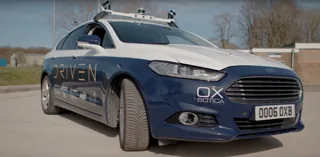Equipping vehicles with autonomous or advanced safety technology could make “driving less safe, not more” in the short term, safety experts have warned.
Multiple studies have found that more than 90% of incidents are caused by human error and it is widely expected that autonomous technology will largely eliminate these and reduce the number of collisions.
However, before vehicles become fully autonomous, cars will be on the road which are self-driving part of the time, but must still be driven by humans at other times.
It is this handover to humans which could lead to a period of increased risk.
Lisa Dorn, associate professor of driver behaviour at Cranfield University, which together with the University College of London is researching this transition, told the Brake Fleet Safety Conference: “We know drivers change their behaviour and response to those systems in all sorts of complex and perverse ways.
“Vehicles (driven autonomously) take drivers out of the loop and we know it can lead to slower reactions. It can take some time before they are re-engaged. Studies have shown that sometimes it can take several seconds.
“We also know that when you give people more capacity for doing things other than their primary task then they are much more likely to engage in secondary tasks.”
Research has shown that drivers tend to complete more than two-and-a-half times as many tasks when travelling in a highly-automated car than when manually driving, reducing their attention to the road.
“One of the problems (with high-automated cars) is that drivers will have the capacity to do other things and as soon as you do other things you are distracted and that is potentially where the danger is,” Dorn added.
Her sentiments were echoed in a report issued last month by the International Transport Forum which said claims self-driving cars could avoid 90% of road deaths by eliminating these errors is an “untested and uncertain hypothesis”.
The report added: “Shared responsibility between robot and human drivers can, in fact, lead to more complex driving decisions.
“The unintended consequences might make driving less safe, not more. In situations where humans take over control from robots, more crashes might occur among ‘average’ drivers.”
The report added that many crashes involving human error also involve other factors which may still have led to that collision even if the human had not committed an error in judgment or misperception.
These could include poor roadway design or faulty vehicles. “Human error can also be non-driver-related errors by pedestrians, cyclists and motorcyclists,” added the report. “Since they won’t be automated, their errors will probably not be eliminated by automation.
“These considerations do not likely impact the general finding that automation may continue to significantly better safety outcomes, but it may temper the assessment of automation benefits versus disbenefits.”
Advanced safety assistance systems can result in over-confidence
Cranfield University’s Lisa Dorn warned that advanced driver assistance systems such as forward collision warnings may also have a negative effect on safety, despite having an overwhelmingly overall positive impact on the number of collisions.
Experts believe that AEB alone has the potential to save 1,100 lives and more than 120,000 casualties in the UK over the next 10 years, with research showing that cars fitted with the technology have a 38% reduction in rear-end crashes.
However, Dorn said the technology may also make some drivers over-confident.
She added: “If the technology makes them feel safer, they will take more risks. For example, people may feel they can drive faster when an ABS is in use.
“I’m sure fleet managers have stories about how drivers are using forward collision warnings and how annoyed they get with them, how they rely on parking assist and then crash into something because they go too close.”























Login to comment
Comments
No comments have been made yet.